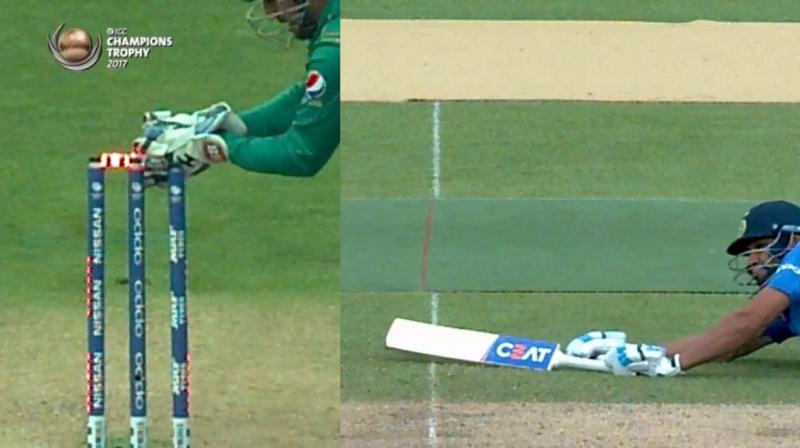Rohit Sharma's bouncing bat' run out explained and why it won't stand from October
The run out laws are set to change from October 2017, as the batsmen will get more leeway in case their bat is not grounded.

Mumbai: Rohit Sharma was unfortunate to have been run-out on 91 in India’s ICC Champions Trophy Groub B opener against Pakistan, on Sunday.
The Team India opener had actually slid his bat into the crease before Pakistan skipper Sarfraz Ahmed whipped off the bails from a Babar Azam throw. However, Rohit’s bat had bounced into the air while the bails were being whipped off, something that rendered him out.
Rohit Sharma's 'bouncing bat' run-out by Babar Azam for 91 https://t.co/Vra4EQXrR9 #cricket @icc
— DC Sports (@_DCSports) June 5, 2017
According to Law 29 (a) of the MCC Laws of cricket, “A batsman shall be considered to be out of his ground unless his bat or some part of his person is grounded behind the popping crease at that end.”
In Rohit’s case, his bat had bounced up into the air, and no part of his bat was actually “grounded behind the popping crease.”
However, new run out laws are set to be implemented from October 1, 2017.
"The ‘bouncing bat’ run out is when a batsman makes his ground and, while still running, loses contact with the ground beyond the popping crease. It could be his bat or any part of his person that loses contact," MCC Cricket Academy manager Fraser Stewart explained.
"If a running or diving batsman has grounded his bat or his person beyond the popping crease, and has continued momentum towards the stumps and beyond, he will be deemed to be within his ground (even) if his bat or person subsequently loses contact with the ground," he added.
"The last time a new Code of Laws was written was in 2000. This Code has been amended 5 times since then – in 2003, 2008, 2010, 2013 and 2015 – but in October 2017 there will be a new Code, which will provide a different framework for the Laws, together with a more logical numbering sequence,” Stewart concluded.

